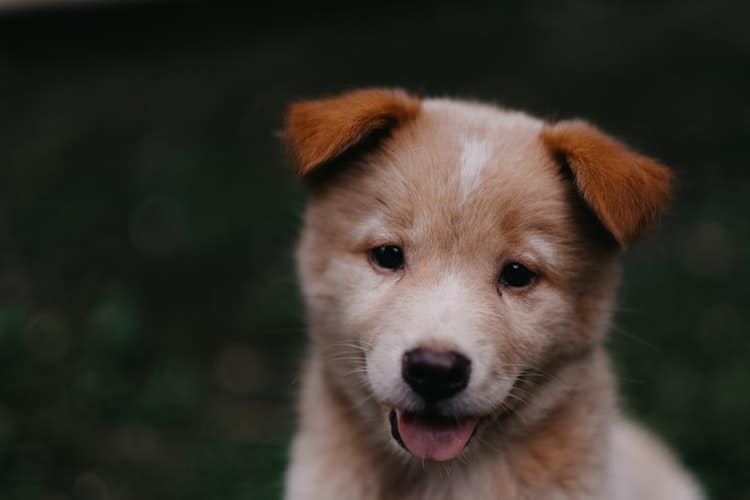How to Introduce a New Dog to Your Kids
Many thanks to Cassidy Wainwright for this guest article based on her own experiences.
Every year, new campaigns warn people against bringing puppies home as pets during the festive season, owing to the 54% increase in the number of dogs abandoned at shelters. Of course, if you have kids and you are bringing a dog home to your own home after careful consideration, it is a totally different story. It means you have probably crunched the numbers in terms of annual costs and time expenditure, and you have chosen a breed that is known for its love for little children.

Introducing a new pet to your home takes patience, since it involves training the dog and educating your kids about appropriate behaviors when around dogs. With commitment and a little effort over the festive season, you can easily crack the code and teach your kids to be excellent pet owners in their own right.
Starting Out Gently
From the outset, children should know that petting a dog is a gift rather than a right. Moreover, it is one that should always be initiated by the dog. First teach kids how to invite a dog to greet them the way they would with any friendly dog they came across in the street.
Your children should stand with the side of their body facing the dog and their hand in a fist. Without looking at the dog straight in the eye, they should invite it to come and greet them. It’s important NOT to stare at the dog, as this can be interpreted by the dog as challenging.
If the dog does not wish to come to them, they should not approach the dog. Puppies and adults dogs will usually get close to (and sniff!) all family members, but if a child suddenly runs up to them and makes a quick or erratic, movement, the dog could potentially become startled.
Empathy for Your Pooch
Kids should understand that in the same way that they do not like to be pinched or have their ears pulled, so, too, should these habits be avoided in dogs. Explain that they have an extra large responsibility when it comes to their new pooch, because it cannot speak and is therefore dependent on their understanding to have its needs fulfilled.
Children will very much learn from the example you set. If they see that you pet your dog gently, without putting your weight on it or petting it too hard, they will begin to see their dog as the relatively fragile animal that it is. Take their hand beneath yours and pat the dog for them initially, so they see how light their touch should be.

Assigning Responsibilities
Children who are mature enough to take some responsibility for rearing their dog should be assigned tasks, based on their preferences and abilities. You should oversee, of course, that tasks are being completed, especially when it comes to vital ones like feeding the dog and supplying it with fresh water.
If your kids are young, it is best that you take charge of important responsibilities like providing your dog with regular flea and tick treatments and deworming tablets. Your kids can always help you out, of course. These days, deworming tablets come in a chewable form that dogs love!

If you take care of the medication, your kids can take charge of fun items like chewy toys and treats for Fido. Believe it or not, chewy toys are very important, especially for dogs who might start gnawing on furniture or slippers if they are not given a more interesting alternative.
Into the Arms of Mother Nature
Americans spend an average of 90% of their time indoors and that means one thing: most of us (adults and kids alike) aren’t getting enough exercise. Studies have shown that dogs are great for our health, and one of the most important reasons why, is that they ‘force’ us to head into the Great Outdoors for a brisk walk or run.
You can read more about running with your dog here and the sport of Canicross.
Taking Fido out for a walk twice daily with kids will enable them to appreciate the fact that in order to be healthy, a dog needs to spend time exercising outdoors.
It will also indirectly build their relationship with nature, awakening them to the beauty of forests, parks, and other green areas that are so conducive to a peaceful state and optimal mental health.

Involving Kids in Training
Whether you use a clicker or simple voice commands to teach your pooch skills like walking on a lead, shaking paws or rolling over, involve your child, allowing them to feed Fido treats for tasks completed.
Training dogs is an excellent exercise in patience, and it shows kids how fulfilling achieving aims can be. Children should learn to walk and recall a dog who is engaged in free play. When they notice the dog respects them, their self-confidence will grow exponentially.
Numerous studies have shown the many benefits that dogs can bring homes; they can reduce asthma rates in little kids, and help kids and adults who are weighed down by stress. Christmas time is ideal for bringing a new pet home, since families tend to have more free time to train and get to know their new pet.
Introduce your children to your new dog slowly, stressing the importance of respect, patience, and love. Lead by example, showing through your actions and words that dogs are magnificent creatures worthy of all the love and care you bestow on them.
We hope you have enjoyed this guest article by Cassidy Wainwright. Please do leave any comments below or let us know your experience of introducing a new dog to kids!



